#Printing (Industry)
Explore tagged Tumblr posts
Text




From: Marques typographiques des imprimeurs et libraires qui ont exercé dans les Pays Bas, : et marques typographiques des imprimeurs et libraires belges établis à l’étranger. Ghent: Université de Gand, 1894.
Z236.N5 B4
#printer's marks#printing industry#Belgium#illustration#printing history#heraldry#Pegasus#chicken#fountain#lion#libraryofva#specialcollections#rarebooks#19thcentury
28 notes
·
View notes
Text
What is the standee size of a roll up banner?
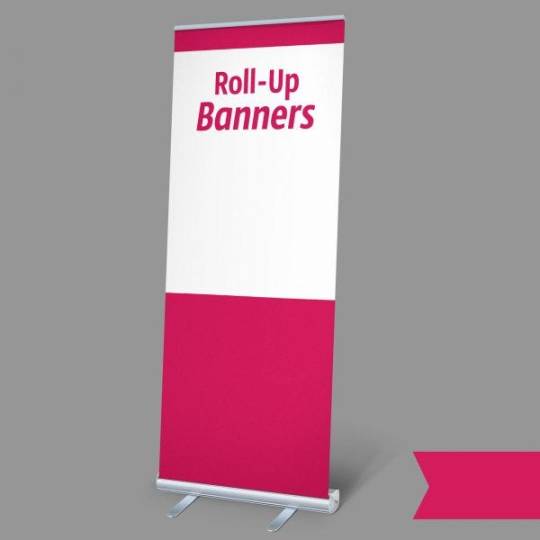
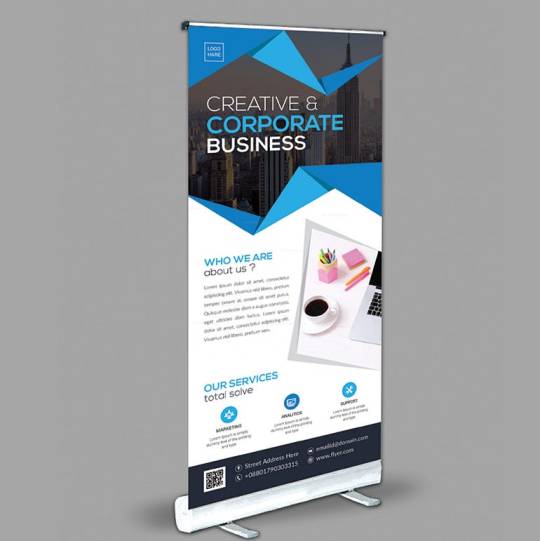
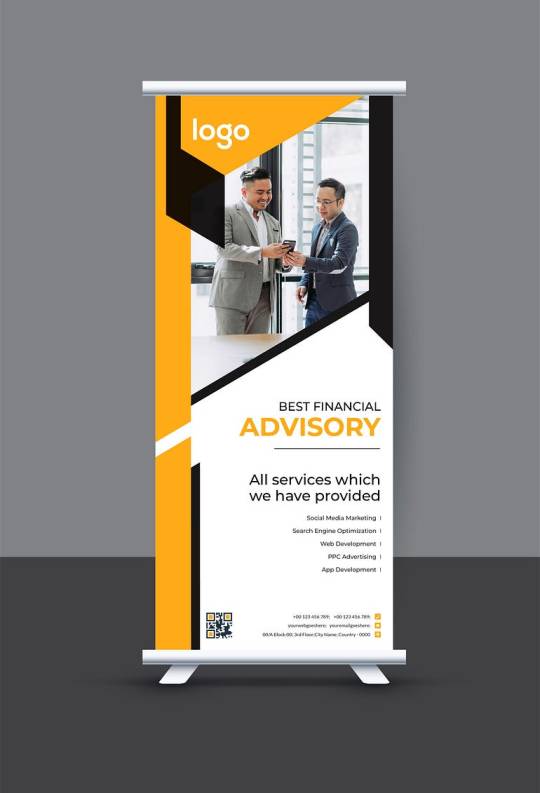
They consist of a printed graphic panel that is attached to a retractable mechanism housed within a base. The banner can be easily set up by pulling the graphic panel up from the base and attaching it to a support pole or stand.
Standard Sizes
While roll up banners can be customized to various sizes, there are several standard sizes that are widely used in the industry. The most common standard sizes for roll-up banners include:
850mm x 2000mm (33.5” x 78.7”): This is one of the most popular sizes for roll-up banners. It offers a good balance between portability and visibility, making it suitable for a wide range of applications including trade shows, exhibitions, retail displays, and presentations.
1000mm x 2000mm (39.4” x 78.7”): Slightly wider than the 850mm version, this size provides additional space for larger graphics and more content. It is often chosen when extra visibility and impact are desired, such as in high-traffic areas or larger exhibition spaces.
1200mm x 2000mm (47.2” x 78.7”): This is the widest standard size available for roll-up banners. It offers even more space for graphics and text, making it ideal for situations where maximum visibility and impact are required, such as in large exhibition halls or outdoor events.
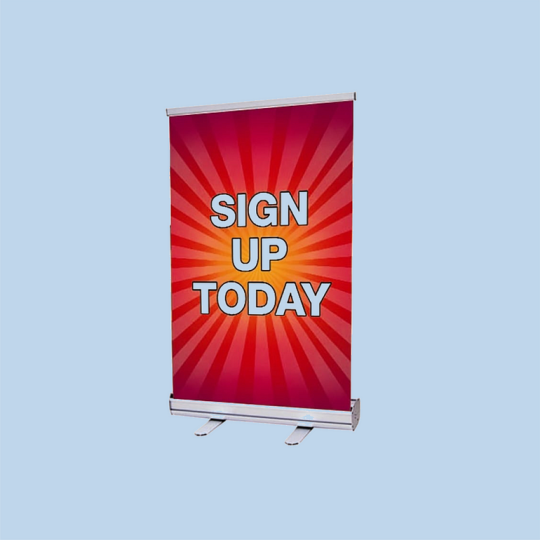
Factors to Consider
When choosing the standee size of a roll up banner, it’s essential to consider several factors to ensure that it meets your specific needs and requirements:
Venue and Space: Consider the size of the venue where the roll-up banner will be displayed. If space is limited, a smaller size may be more appropriate to avoid overcrowding. On the other hand, larger venues may require a bigger banner to ensure visibility from a distance.
Audience and Visibility: Think about the intended audience and how far away they will be from the banner. A larger size may be necessary for outdoor events or locations with high foot traffic to ensure that the message is visible from a distance.
Content and Design: Evaluate the amount of content you need to display on the banner. If you have a lot of information or detailed graphics, a larger size may be necessary to prevent overcrowding and maintain readability.
Portability: Consider how easily the banner can be transported and set up at different locations. Larger banners may be more challenging to transport and require additional support to ensure stability.
Budget: Keep in mind that larger banners may be more expensive to produce than smaller ones due to the increased printing and material costs. Consider your budget constraints when choosing the size of the roll-up banner.
Custom Sizes

When opting for a custom size, work closely with your printing provider to determine the dimensions that best suit your needs while ensuring optimal print quality and visual impact. Provide them with detailed specifications and artwork files to ensure that the final product meets your expectations.
Conclusion
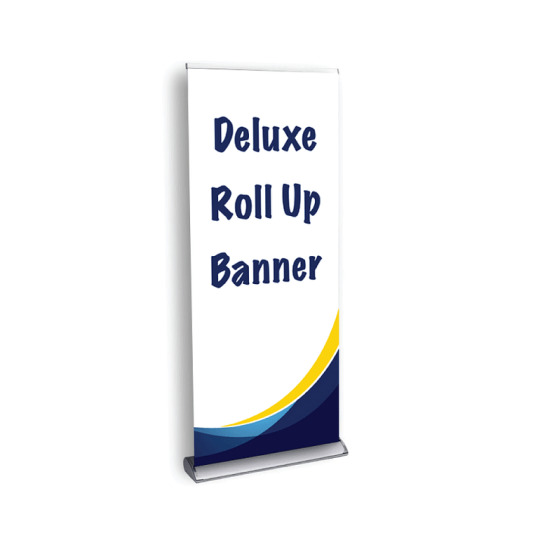
However, custom sizes offer flexibility for tailored solutions to specific requirements. By carefully considering these factors and working closely with your printing provider, you can choose the right size roll up banner to effectively promote your brand and message in any setting.
#3d printing#3d sign#3d signage#branding#signage#print on demand#digital art#printing company#print on demand services#digital painting#printing industry#print on demand agency#print design#fine art print#print on demand company#printing services#unique prints#wall print#print#roll up banner#roll up standee#pull up banner printing
2 notes
·
View notes
Text
9 Types of Brochure Designs
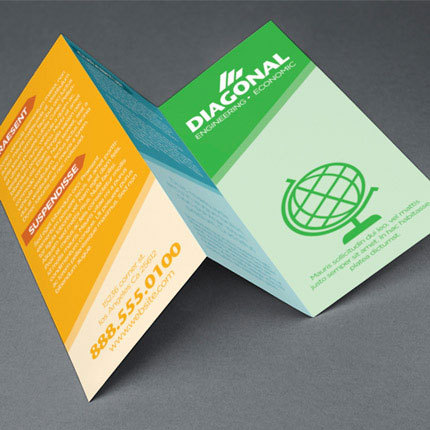
Introduction:
Brouchers are promotional documents used by companies to introduce their products and services to their customers by providing simple information about them. The more attractive and vibrant a flyer and brochure is the more effective it would attract potential customers.
Brochures are ideal for promotions of restaurants, spas or any kind of business. For successful marketing, the quality of material used for the brochure must be up to the mark. Along with the material, high-quality printing is also necessary.
In this article, we are going to learn about 9 types of brochures that are used by businesses more often.
Types of Brochures:
Gatefold: The gatefold brochure is folded in such a way that the two outer panels fold inward to meet at the centre, creating a gate-like appearance. Gatefold is ideal for brochures with impactful visuals or those that tell a story in a sequence. Often used for product launches, event promotions, or high-end services.
Bi-Fold: A bi-fold brochure is folded in half, creating two equal panels. It’s a simple and common fold that provides a front and back cover, along with ample space for content on the inside. It’s commonly employed for informational brochures, menus, or event programs. The straightforward layout is effective for presenting key information with a clear front and back.
Trifold: A trifold brochure is folded into three equal sections, with the outer sections folding inward to cover the central panel. This type of Brochure is excellent for organizing information into distinct sections. Frequently used for travel brochures, educational materials, or promotional pamphlets where content can be compartmentalized.
Roll fold: In a roll fold, the panels are folded one after the other, creating a rolling effect. This type of brochure is suited for content-heavy brochures, such as annual reports or detailed product catalogues. The sequential unfolding maintains a logical flow, making it easy for readers to follow along.
Z Fold: The Z fold involves folding the paper into a zigzag pattern. The paper opens up like an accordion, with alternating panels visible. It’s very effective for presenting step-by-step information or creating a visual timeline. Frequently used for instructional guides, event timelines, or any content that benefits from a sequential unfolding.
French Fold: The French fold involves folding the paper in half horizontally and then vertically. This creates four panels, with the outer panels being half the size of the inner panels. This fold is often used for artistic or high-end promotional materials. The larger outer panels provide a canvas for impactful visuals, while the inner panels can house detailed information or a narrative.
Accordion fold: Similar to the Z fold, the accordion fold involves multiple parallel folds. However, all the panels in an accordion fold are the same size, creating a continuous, accordion-like effect when the brochure is opened. It is suitable for conveying a mix of visuals and text, it is popular for brochures with diverse content, such as product features or service offerings.
Half Fold: A half-fold is a simple fold where the paper is folded in half, resulting in two equal-sized panels. This basic fold is often used for event invitations, basic product information, or introductory company profiles where brevity is key. This basic fold brochure is quick and easy for conveying essential information.
Double Parallel Fold: In a double parallel fold, the paper is folded in half and then folded in half again parallel to the first fold. This creates four equal-sized panels, offering a compact format with organized sections for content. This type of fold is efficient for organizing content into four distinct sections. Well-suited for brochures where each panel represents a different aspect of a product or service.
Conclusion:
In conclusion, the art of brochure folding is a nuanced aspect of design that significantly influences how information is presented and perceived. Each design serves a distinct purpose, offering a unique canvas for content creators to convey their messages effectively. From the dramatic presentation of a Gatefold to the organized sections of a Trifold, and the artistic flair of a French Fold, the choice of fold plays a crucial role in capturing the attention and engagement of the audience.
Contact Shayona Printing for any type of brochure design that you require. We are happy to help you. For the best business printing services near Corona CA contact Shayona Printing.
#brochure#brochure design#brochure printing#marketing materials#printing company#printing services#shayona printing#printing industry
4 notes
·
View notes
Text
True Story
Way back in our senior year in high school, in the middish 90s, as his oldest daughter, our dad taught us how to be a stripper.
On a light table.
And told us to be thankful that we were not "a PMS man".
#coming of age#it was pretty cool because we got a raise after that#when we were young#printing industry
4 notes
·
View notes
Text
Choosing the Right Printing Technology for Your Business Needs.
In today's dynamic business landscape, selecting the appropriate printing technology is crucial for ensuring efficiency, quality, and cost-effectiveness. With various printing options available, making an informed decision requires careful consideration of several factors.
Understanding Your Printing Requirements
Begin by comprehensively evaluating your business's printing needs. Consider the volume of printing required, the type of materials to be printed on, and the desired quality and speed. For instance, a small office with minimal printing needs might find a basic laser printer sufficient, while a printing company specializing in high-quality graphics will likely require advanced digital or offset printing solutions.
Types of Printing Technologies
Laser Printing: Ideal for high-speed printing of text documents and basic graphics. It's cost-effective for office settings with moderate printing demands.
Inkjet Printing: Versatile and capable of producing high-resolution images, making it suitable for small-scale graphic printing and photo printing.
Digital Printing: Offers flexibility for short print runs, variable data printing, and on-demand printing. Well-suited for businesses requiring quick turnaround times and customization.
Offset Printing: Known for its superior quality in large-volume printing. It involves a more complex setup but delivers high-quality prints for brochures, magazines, and marketing materials.
Considerations for Selection
Print Volume: Assess the quantity of printing your business regularly requires. If it's high, offset printing might be more cost-effective despite the setup costs.
Quality Requirements: Determine the level of print quality needed for your materials. Inkjet and digital printing usually offer better color accuracy and resolution compared to laser printing.
Turnaround Time: If your business frequently needs quick prints, digital printing provides faster results as it doesn’t require the setup time that offset printing does.
Budgetary Constraints: Evaluate the initial investment cost, maintenance expenses, and overall operational costs of different printing technologies. Sometimes, a higher initial investment may result in long-term savings.
Consulting with Printing Experts
Engage with printing industry professionals or vendors to gain insights into the latest printing technologies and their suitability for your specific business needs. They can provide valuable guidance based on their expertise and experience.
Conclusion
Choosing the right printing technology involves a thoughtful analysis of your business requirements, considering factors such as print volume, quality, speed, and budget. By understanding these parameters and consulting with experts, businesses can make informed decisions that optimize their printing processes and enhance overall efficiency.
In Dubai , Your Online print shop - That provide you all printing solutions!

PRINTENCY.COM
#printing services#printing shop#printing company#printing industry#printing press#book printing#offset printing#digital printing#brochure#keychain#tshirt#business card#flyers printing
3 notes
·
View notes
Text
چاپ لیبل شرینک pvc
چاپ لیبل شرینک پی وی سی
این پوششها امروزه برای تبلیغ و معرفی بهتر محصول از حالت تک رنگ بودن خارج شده و به فراخور کالا دارای رنگ و لعاب شده است که لیبل pvc شیرینگ نام دارد و به جای استفاده از رولهای نایلون شرینک ساده از این لیبلها برای بستهبندی محصولات استفاده میشود.
PVC shrink label printing
Covering by a thin layer of PVC with the help of heat and contraction of this layer is called shrinking.
2 notes
·
View notes
Text
Flyer print & delivery today!
Leaflets and flyers printing are proven the massive type of advertising. It’s also cost-effective. Because, most of the people read or glance at flyers delivered to their door. In fact, we are one of the best leading online printing service provider. Read more
2 notes
·
View notes
Text
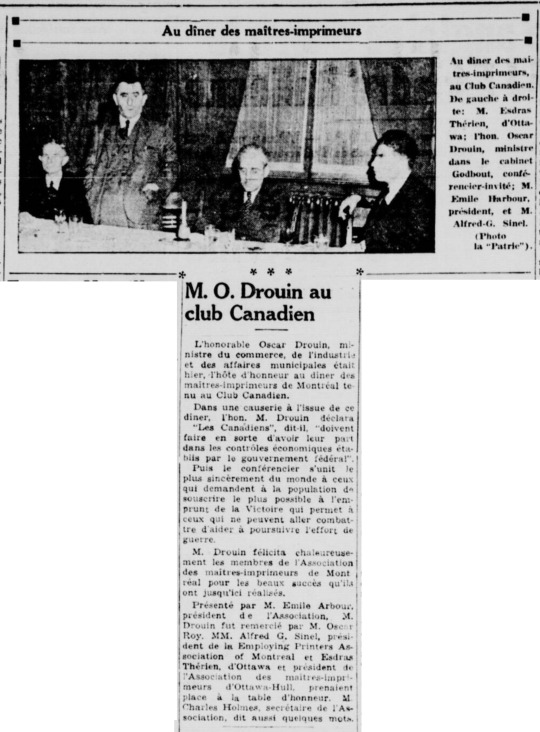
"Au dîner des maîtres-imprimeurs," La Patrie. April 20, 1943. Page 4. --- Au diner des maîtres-imprimeurs, au Club Canadien. De gauche à droite: M. Esdras Thérien, d'Ottawa: l'hon. Oscar Drouin, ministre dans le cabinet Godbout, conférencier-invité; M. Emile Harbour, président, et M. Alfred-G. Sinel. (Photo la "Patrie"). ///
M. O. Drouin au club Canadien ---- L'honorable Oscar Drouin, ministre du commerce, de l'industrie et des affaires municipales était hier, l'hôte d'honneur au dîner des maîtres-imprimeurs de Montréal tenu au Club Canadien.
Dans une causerie à l'issue de ce diner, Thon. M. Drouin déclara "Les Canadiens", dit-il, "doivent faire en sorte d'avoir leur part dans les contrôles économiques établis par le gouvernement fédéral".
Puis le conférencier s'unit le plus sincèrement du monde à ceux qui demandent à la population de souscrire le plus possible à l'emprunt de la Victoire qui permet à ceux qui ne peuvent aller combattre d'aider à poursuivre l'effort de guerre.
M. Drouin félicita chaleureusement les membres de l'Association des maîtres-imprimeurs de Mont réal pour les beaux succès qu'il ont jusqu'ici réalisés.
Présenté par M. Emile Arbour, président de l'Association, M. Drouin fut remercié par M. Oscar Roy. MM. Alfred G. Sinel, president de la Employing Printers Association of Montreal et Esdras Thérien, d'Ottawa et président de Association des maîtres-imprimeurs d'Ottawa-Hull, prenaient place à la table d'honneur. M Charles Holmes, secrétaire de l'Association, dit aussi quelques mots.
#master printers#montreal#canadian club#printing industry#printers' association#ottawa#gatineau#member of parliament#mackenzie king government#elite canadians#canada during world war 2
1 note
·
View note
Text
How Modern Uniform Design Software is Transforming Apparel Customization
Uniforms have always symbolized unity, professionalism, and brand identity across industries—from sports teams and schools to corporate offices and healthcare facilities. But designing uniforms used to be a time-consuming, back-and-forth process between clients and manufacturers. That’s all changing with the rise of uniform design software.
This technology is revolutionizing how uniforms are conceptualized, designed, and ordered—streamlining the customization process for both businesses and end-users.
What is Uniform Design Software?
Uniform design software is a specialized online tool that allows users to design, personalize, and visualize uniforms digitally in real-time. It enables the addition of logos, colors, patterns, text, and even employee names on various uniform types—ranging from medical scrubs and sports jerseys to industrial workwear and hospitality outfits.
Available as standalone solutions or as part of a web-to-print ecosystem, this software gives businesses the flexibility to create unique apparel that aligns perfectly with their brand or organization.
Core Features of High-Quality Uniform Design Software
1. Interactive 2D/3D Visualization
The software provides real-time previews in either 2D or 3D, allowing users to rotate, zoom, and inspect every angle of the uniform. This immersive view helps reduce errors and increases confidence in design approvals.
2. Custom Branding Tools
Upload your brand’s logo, select color palettes, and apply design elements to specific uniform sections—ensuring complete brand alignment.
3. Preloaded Templates
Start quickly with professionally designed templates for various industries such as sports, education, healthcare, and corporate. These templates are fully editable, giving users a head start in customization.
4. Size & Fit Personalization
Offer size charts and fit guides to allow precise measurements. Some software even includes avatar-based fitting for better accuracy.
5. Dynamic Pricing Integration
Customers can see price updates in real time based on their design choices—such as extra logo placements or embroidery—helping set clear expectations.
6. Print-Ready File Generation
Once the design is finalized, the software generates high-resolution, print-ready files that manufacturers can use directly, streamlining production and eliminating the need for manual file corrections.
Benefits for Businesses Using Uniform Design Software
✅ Streamlined Ordering Process
By digitizing the design process, businesses reduce the need for back-and-forth revisions, phone calls, and physical samples.
✅ Improved Accuracy
With visual previews and design validations, there’s a lower chance of misprints or incorrect orders—saving time and money.
✅ Faster Turnaround
Integrated with order workflows and web-to-print platforms, uniform design software speeds up approvals and production cycles.
✅ Customization at Scale
Whether you're outfitting a small local team or a global workforce, uniform design software makes it easy to apply consistent branding across all orders—while allowing for individual personalization, such as names or roles.
✅ Empowered Customers
Clients can explore designs themselves before submitting an order. Some systems even support multi-user access, ideal for distributed teams or franchises.
Industries Benefiting from Uniform Design Tools
Sports Teams: Create customized jerseys, practice gear, and fan apparel
Schools and Colleges: Offer branded uniforms for students and staff
Hospitality & Retail: Ensure employees reflect your brand with consistent and elegant attire
Healthcare: Customize scrubs with department names, hospital logos, or color-coded roles
Corporate & Industrial: Offer personalization options while maintaining company-wide uniformity
Integration with eCommerce and ERP Systems
The most advanced uniform design software integrates seamlessly with platforms like Magento, Shopify, WooCommerce, and custom B2B storefronts. Additionally, it can connect with ERP systems for automatic order tracking, inventory control, and invoicing—creating a truly end-to-end solution.
This is especially useful for companies managing uniforms for hundreds or thousands of employees, where automation reduces errors and administrative overhead.
Choosing the Right Uniform Design Software
When selecting a uniform design solution, consider:
Device compatibility: Should work on desktop and mobile
Customization flexibility: Full control over colors, fonts, logos, placements
Scalability: Can grow with your team or customer base
User experience: Should be intuitive for non-designers
Integration: Works with your print providers and back-office systems
Future Finds in Uniform Design Software
With the continued growth of personalization and the need for remote collaboration, expect future versions of uniform design platforms to offer:
AI-assisted design recommendations
Virtual fitting rooms using AR/VR
Voice-command enabled customizations
Real-time team collaboration tools
Blockchain verification for high-security industries
Conclusion
The uniform may be a symbol of unity, but the way we design it is becoming increasingly personal and dynamic. Uniform design software empowers both brands and buyers to create apparel that’s not just functional but also beautifully customized and aligned with their identity.
Whether you're a manufacturer, a retailer, or a brand manager, this software bridges creativity and logistics—delivering speed, precision, and satisfaction in every order.
#uniform design software#web-to-print#erp system#uniform designer tool#printing industry#customization
0 notes
Text
Book printing exports and Trump tariffs
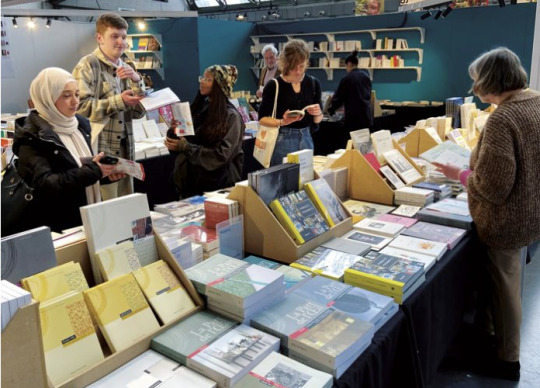
It is no secret that the printing industry is one of the most vibrant in the country, although it is fragmented and has many small and medium players, and a few that are large. By large commercial print businesses, I mean those with turnovers greater than Rs 500 crore (US$ 60 million).
Nevertheless, a few of our substantial book printers and book print exporters have reached the large category – at least a couple are listed on the stock exchange. Apart from the large printers, there are several book printing exporters in the medium category (above Rs 100 crore or US$ 12 million). They attend international book fairs, manage to bring back good orders, and have grown their businesses. Many smaller book printers have also become exporters.
An obvious reflection of their continued growth is the number of new 8-color perfecting presses purchased in the past three or four years. One book printing exporter installed his third new 8-color perfector before the end of March and another is replacing his used 8-color presses with new and highly automated 8-color presses.
As for the looming trade war or the tariffs, although there can be no mid or long-term clarity in the Trump era, the information received by book printers from the recent London Book Fair is that the imports of children's books and textbooks into the United States will be exempt from any special tariffs. Perhaps only the 10% general 'reciprocal' customs duty against all countries may be applied. Apparently, in the case of children’s books and school textbooks, even China is exempt from any of the punitive ‘reciprocal’ tariffs.
We have learned that this exemption concerning book exports brought considerable relief to publishers, book producers, and importers at the recent London Book Fair. It also meant that they did not feel immediately compelled to shift their production from China to suppliers in other countries. Some publishers or importers may be seeking new suppliers; however, this is out of choice and perhaps as a future safeguard, and not out of immediate compulsion.
Thus, Indian book exporters cannot rely on any differential or ‘reciprocal’ Trump tariff against Chinese suppliers to drive US publishers or book importers to avail of their services. Some exporters may seize the opportunity, but more likely, they will not be able to avail of the opportunity to improve their price performance. Or their execution capabilities to dramatically increase their market share in US book printing imports.
Thus, the opportunity remains the same as before Trump, as do the challenges of not being the lowest-cost and most reliable producer. Leading book printers and exporters admit that we are not the lowest-cost producers. No industry segment in India is the lowest-cost producer of anything. Our inefficiencies stemming from poor and erratic skills, logistics, energy, and most of all our culture and attitudes, are not aligned with performance, commitment, and accountability.
In terms of quality and reliability, the challenges start from the raw material and consumables suppliers. Paper mills increase prices at the slightest hint of an opportunity. In some categories, there are a few local suppliers who, in times of crisis, can behave like monopolies in terms of prices, product quality, and timeliness of delivery, forcing the book exporter to cut a sorry figure in front of his customer.
Lastly, the printer’s associations have neither facts nor ideas of how to lobby the government, unlike the auto industry or the software industry, which can get huge tracts of free land to set up their businesses. Instead of coming up with real research and estimates of export prospects and employment, our printing industry associations are busy splintering themselves for the immediate gains of hollow positions and personal benefits. We can neither build a reliable supply chain nor a community of exporters.
Thus, for book printers and exporters, whether the other side bids trumps or no trumps, they will have to expand within the same speculative constraints that they have thus far managed to carve out a respectable niche. This is creditable but a somewhat smaller market share than they deserve.
0 notes
Text
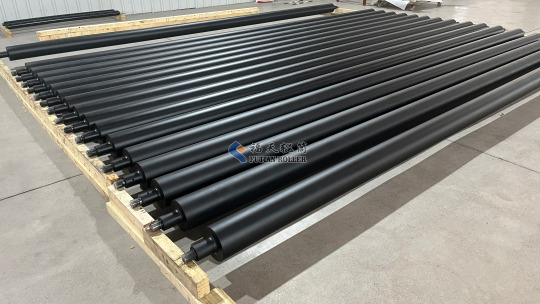
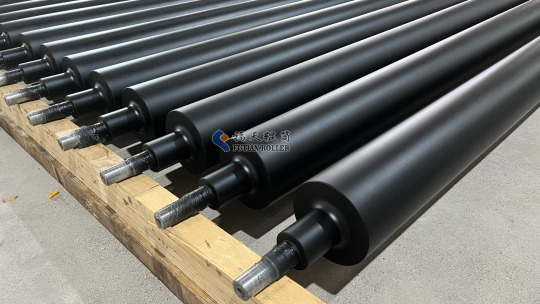
Epoxy Resin Coating Drum Rollers for Digital Printing Industry. 👇👇👇 💻Website: www.rollerft.com ✉ Email: [email protected] 📞Whatsapp: +86 135 6716 4040
0 notes
Text
What does Print on Demand do? – A Revolution in Publishing
In the fast-evolving landscape of publishing, Print on Demand (POD) has emerged as a revolutionary approach, transforming the way books, apparel, and various other products are produced and distributed.
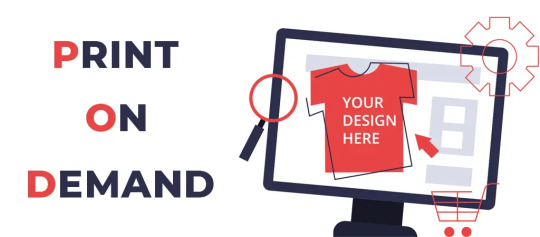
This innovative printing technology has disrupted traditional publishing models, offering authors, artists, and entrepreneurs unprecedented flexibility and cost-effectiveness. This article delves into the intricacies of Print on Demand, exploring its functionalities, advantages, and impact on the publishing industry.
Print on Demand Defined:
Print on Demand refers to a printing process where copies of a book or other products are produced in response to specific orders, rather than being printed in bulk quantities beforehand. In traditional publishing, large print runs were the norm, leading to high upfront costs and the risk of unsold inventory.
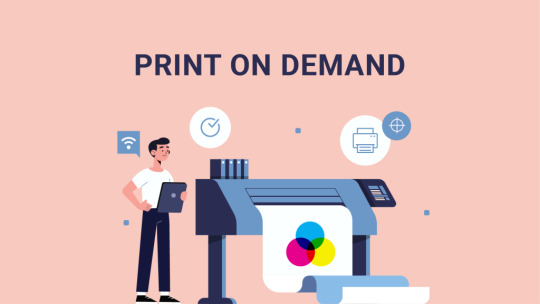
POD, on the other hand, allows for the creation of individual copies or small batches as and when they are needed, mitigating financial risks and reducing waste.
How Print on Demand Works:
The process of Print on Demand is facilitated by digital printing technology. Instead of using traditional offset printing, where plates are created for each page, POD relies on digital files to directly transfer the content onto the printing press. This digital approach enables the quick and efficient production of one-off copies or small print runs.
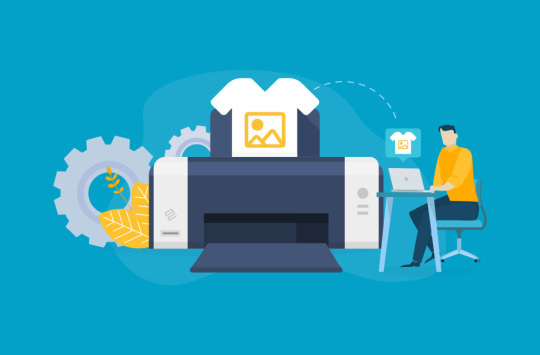
Key Components of the Print on Demand Process:
Digital File Submission: Authors or content creators submit digital files of their work to POD service providers. These files include the final version of the content in a format suitable for printing.
Printing: Once the digital files are received, the POD service provider uses digital printing technology to produce copies of the book or product. This process allows for on-demand production without the need for large, expensive print runs.
Binding and Finishing: After printing, the individual pages are bound together, and finishing touches such as cover lamination are applied. The final product closely resembles traditionally printed books.
Distribution: Upon completion, the finished products are shipped directly to the end customers or to distribution channels, bypassing the need for warehousing and large-scale inventory management.

Advantages of Print on Demand:
Cost-Effectiveness: Traditional publishing models often required authors or publishers to invest significant sums in large print runs. Print on Demand eliminates the need for upfront investment in bulk printing, reducing financial risks and making publishing more accessible to a wider range of individuals.
No Inventory Overhead: With POD, there is no need for authors or publishers to maintain large inventories. Each copy is printed as it is ordered, minimizing the risk of unsold stock and associated storage costs.
Flexibility: Print on Demand offers unparalleled flexibility for authors and publishers. Updates, corrections, or changes to the content can be easily implemented without scrapping existing inventory, allowing for more agile and responsive publishing.
Accessibility for Independent Authors: Independent authors can leverage Print on Demand services to publish and distribute their work without the need for a traditional publishing deal. This democratization of publishing has empowered countless writers to share their stories with a global audience.
Reduced Environmental Impact: By eliminating the need for large print runs and excessive warehousing, Print on Demand contributes to a more sustainable and environmentally friendly publishing model. It minimizes paper waste and reduces the carbon footprint associated with transportation and storage.
Applications Beyond Books:
While Print on Demand has its roots in book publishing, its applications have expanded to include a diverse array of products. Apparel, merchandise, customized gifts, and promotional items can all be produced on demand, offering businesses and individuals an efficient and sustainable way to bring their ideas to market.
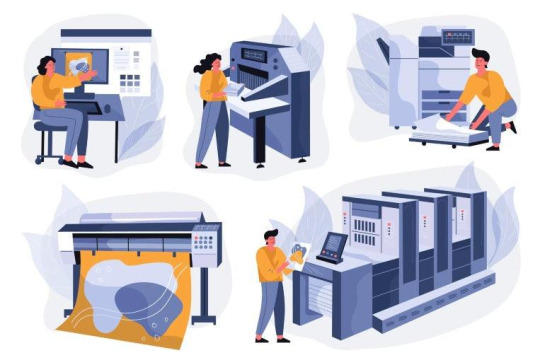
Challenges and Considerations:
Despite its numerous advantages, Print on Demand is not without challenges. Some considerations include:
Quality Control: Maintaining consistent print quality can be a concern, especially when dealing with various POD service providers. Authors and publishers must carefully select reliable and reputable vendors to ensure the integrity of their products.
Pricing Structure: While POD eliminates upfront printing costs, the per-unit cost can be higher compared to bulk printing. Authors and publishers need to carefully consider pricing strategies to ensure profitability.
Limited Format Options: Certain specialized printing formats or embellishments may be limited in the POD process. Authors seeking unique design elements may need to explore alternative printing methods.
Conclusion:
Print on Demand has emerged as a transformative force in the publishing industry, offering unprecedented flexibility, cost-effectiveness, and accessibility. The digital printing technology behind POD has not only revolutionized book publishing but has also expanded its applications to a wide range of products.
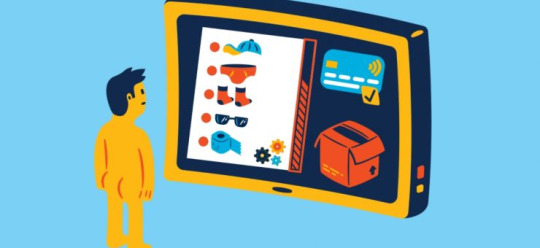
As technology continues to advance, and more individuals and businesses embrace the on-demand model, the future of publishing looks increasingly dynamic, diverse, and sustainable.
#print on demand#signage#3d signage#3d sign#3d printing#branding#digital art#digital painting#poster#pod#printing & advertising#printing services#printing company#printing industry#print on demand services
3 notes
·
View notes
Text
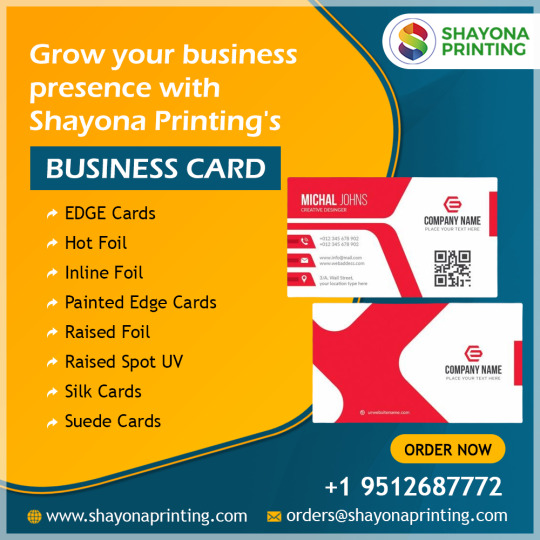
Grow your business presence with Shayona Printing's business card
Choose from a variety of finishes like inline foil, painted edges, raised foil, raised spot UV, silk, and even suede!
Order for Your Business as well!! Link: https://www.shayonaprinting.com/store/product-view.html/33-Business-Cards
#business card printing#business card design#printing services#printing company#printing industry#shayona printing
2 notes
·
View notes
Text
#tax breaks#printing business#printing industry#accounting service#bookkeeping service#bookkeeperlive#USA taxes#united states
0 notes
Text

Blast Furnaces by Bernd and Hilla Becher, Youngstown, Ohio 1983
#silver gelatin print#bernd and hilla becher#industrial photography#blast furnaces#brutalism#brutalist architecture
4K notes
·
View notes
Text
Cafe Restoran Ürünleri Nedir?
Promosyon cafe restoran ürünleri, işletmelerin marka bilinirliğini artırmak, müşteri sadakatini güçlendirmek ve yeni müşteriler çekmek için tasarladığı ve logolarını, marka adlarını veya diğer işletme bilgilerini içeren özel ürünlerdir.
Bu tür ürünler, bir restoran veya kafenin menüsünde yer alan ürünlerin yanı sıra, işletme tarafından sunulan hizmetlerin de bir parçası olabilir. Örneğin, özel olarak tasarlanmış bir kahve fincanı veya restoran logolu bir t-shirt, promosyon ürünleri arasında yer alabilir.
Promosyon ürünleri özel günler, kutlamalar veya müşteri sadakat programları çerçevesinde müşterilere sunulur. Ayrıca, restoran ve cafeler sıklıkla bu tür ürünleri sosyal medya yarışmalarında ödül olarak da kullanabilir.
Cafe Restoran Ürünleri Müşteri Gözünde Etkisi Nedir?
Promosyon ürünlerinin müşteriler üzerinde önemli bir etkisi vardır. Bu etki birkaç farklı biçimde ortaya çıkabilir:
Marka Bilinirliğinin Artırılması: Promosyon ürünleri, markanın adını, logosunu ve diğer işletme bilgilerini geniş bir kitleye ulaştırma fırsatı sunar. Bu, marka bilinirliğinin artmasına ve dolayısıyla daha geniş bir müşteri kitlesi çekmeye yardımcı olabilir.
Müşteri Sadakatinin Güçlendirilmesi: Promosyon ürünlerini alan müşteriler, işletmeye daha bağlı hisseder. Bu ürünler, müşterilerin işletmeyi olumlu bir şekilde anımsamasına yardımcı olabilir ve böylece müşteri sadakatini artırabilir.
Yeni Müşterilerin Kazanılması: Özellikle sosyal medya platformlarında gerçekleştirilen promosyonlar, geniş kitlelere ulaşabilir. Böylelikle yeni müşterilerin dikkatini çekebilir ve işletmeye yeni müşteriler kazandırabilir.
Cafe Restoran Ürünleri Baskı Fiyatları
Promosyon ürünlerinin baskı fiyatları, seçilen ürünün türüne, ürünün kalitesine, baskının karmaşıklığına ve siparişin miktarına bağlı olarak değişir. Basit bir logo veya marka adı baskısı daha uygun maliyetlidir, ancak daha karmaşık veya renkli baskılar maliyeti artırabilir.
Birçok promosyon ürün sağlayıcısı, siparişin miktarına göre indirim sunar. Yani, daha büyük bir sipariş birim başına daha düşük bir maliyet anlamına gelir. Bu nedenle, baskı fiyatları hakkında daha kesin bir bilgi almak için, belirli bir siparişin detayları ile promosyon ürün sağlayıcısına başvurmak en iyisi olacaktır.
Sonuç olarak, promosyon cafe restoran ürünleri, bir işletmenin marka bilinirliğini artırmak, müşteri sadakatini güçlendirmek ve yeni müşteriler kazanmak için etkili bir yol olabilir. Bu ürünler, hem işletmeyi hem de müşterileri memnun etmek için kullanılabilecek geniş bir yelpazede mevcuttur. Dolayısıyla, promosyon ürünlerini stratejik bir şekilde kullanmak, bir restoran veya kafenin başarısında önemli bir rol oynayabilir.
Cafe Restoran Ürünleri Baskı Çeşitleri Nelerdir?
Promosyon ürünleri birçok farklı biçimde ve baskı türüyle üretilebilir. Bu baskı çeşitlerinin seçimi, ürünün türüne, kullanım amacına ve bütçeye bağlıdır. İşte promosyon cafe restoran ürünleri için yaygın olarak kullanılan baskı çeşitleri:
Dijital Baskı: Dijital baskı, karmaşık tasarımlar ve renkli görseller için kullanılır. Bu baskı türü, yüksek çözünürlüklü detaylı görseller için idealdir.
Serigrafi Baskı: Serigrafi, tekstil ürünlerine (örneğin, T-shirtler, şapkalar) uygulanır. Bu yöntem, bir baskı ekranı kullanarak mürekkebin doğrudan ürüne geçirilmesini içerir.
Pad Baskı: Küçük ve düz olmayan nesneler üzerine baskı yapmak için kullanılır. Örneğin, kalem, anahtarlık gibi ürünlerde sıklıkla tercih edilir.
Lazer Gravür: Çoğunlukla metal ve ahşap ürünler için kullanılır. Bu yöntem, ürünün yüzeyine lazer ile işaretleme yapar ve kalıcı, aşınmaya dayanıklı bir sonuç verir.
Tampon baskı: Plastik ürünler üzerine uygulanan bu baskı türü, hızlı ve etkilidir.
Cafe Menülerin Tasarımlarında Neler Olmalıdır?
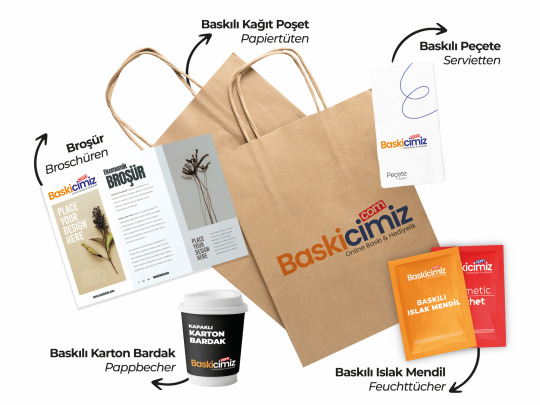
Cafe restoranlar için promosyon menüler özel günlerde veya belirli bir süre boyunca sunulan, çeşitli yiyecek ve içecek seçeneklerini içerir. Promosyon menülerin oluşturulmasında dikkate alınması gereken noktalar şunlardır:
Müşteri Tercihleri: Menü, müşterilerin tercihlerini yansıtmalı ve geniş bir yelpazede seçenekler sunmalıdır. Bunlar arasında farklı diyet gereksinimlerine uygun seçenekler de olabilir (örneğin, vegan veya glütensiz seçenekler).
Sezonsallık: Mevsimsel ürünlerin kullanılması, hem tazelik ve kalite açısından hem de müşterilerin ilgisini çekebilmek açısından önemlidir.
Fiyatlandırma: Promosyon menüler müşterilere bir değer teklifi sunar. Bu nedenle, fiyatlandırma stratejisi dikkatlice belirlenmelidir.
Özel Teklifler: Promosyon menülerde bir veya daha fazla özel teklif bulunur. Bu, bir “2 al 1 öde” teklifi olabilir, veya belirli bir yiyecek veya içecek siparişi ile birlikte indirimli bir ürün olabilir.
Menü Tasarımları Yaparken Nelere Dikkat Edilmelidir?
Promosyon menü baskı tasarımı, işletmenin imajını ve kalitesini yansıtmalıdır. İşte promosyon menü tasarımları yaparken dikkate alınması gereken bazı noktalar:
Marka Uyumu: Tasarım, işletmenin genel marka kimliği ve renk paleti ile uyumlu olmalıdır. Bu, işletmenin tanınabilirliğini artırır ve marka bilinirliğini güçlendirir.
Okunabilirlik: Menünün okunması kolay olmalıdır. Font seçimi, renkler ve metin yerleşimi, müşterinin menüyü rahatça okuyabilmesini sağlamalıdır.
Görsel Çekicilik: Menü tasarımının görsel olarak çekici olması gerekir. Kaliteli foto��raflar ve çekici grafikler, müşterilerin dikkatini çekebilir ve onların sipariş verme olasılığını artırabilir.
Müşteri Yolculuğu: Menü, müşteriyi en çok kar sağlayacak ürünlere yönlendirecek şekilde düzenlenmelidir. Örneğin, en karlı ürünler menünün üstünde veya ortasında yer alır.
Promosyon cafe restoran ürünleri ve menüler, işletmenin marka bilinirliğini artırabilir, müşteri sadakatini güçlendirebilir ve yeni müşterileri çekebilir. Bu nedenle, bu araçları stratejik ve etkili bir şekilde kullanmak, işletmenin başarısını artırabilir.
#print#printing#printing company#printing house#printing money#printing paper box#printing industry#printing machine for paper bag#printing paper package#printing press#baskicimiz.com#baskı#menü baskı
1 note
·
View note